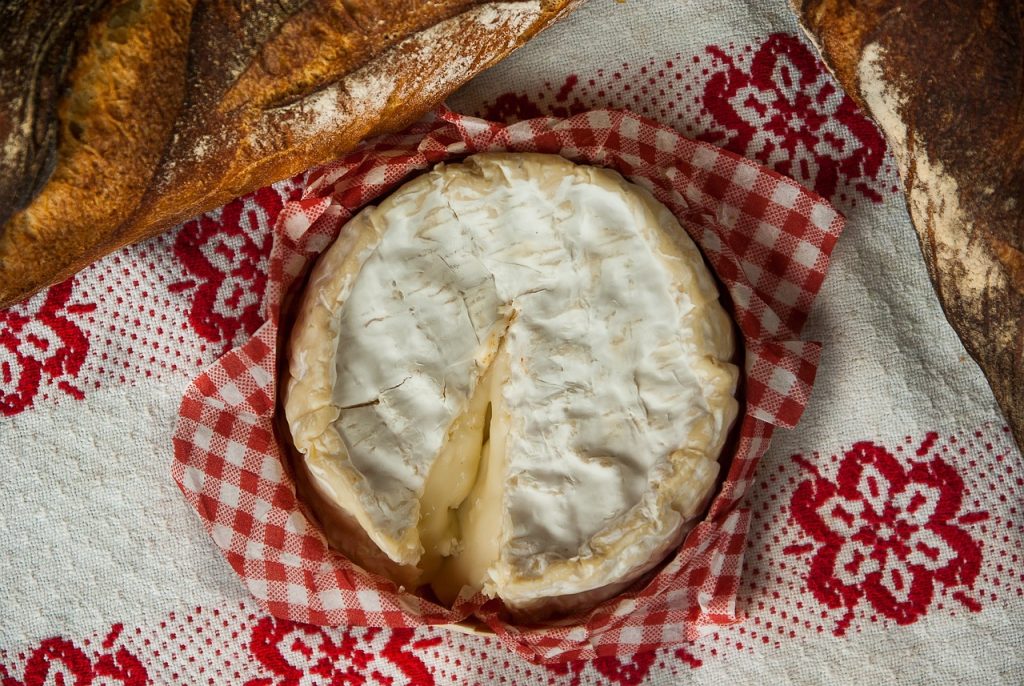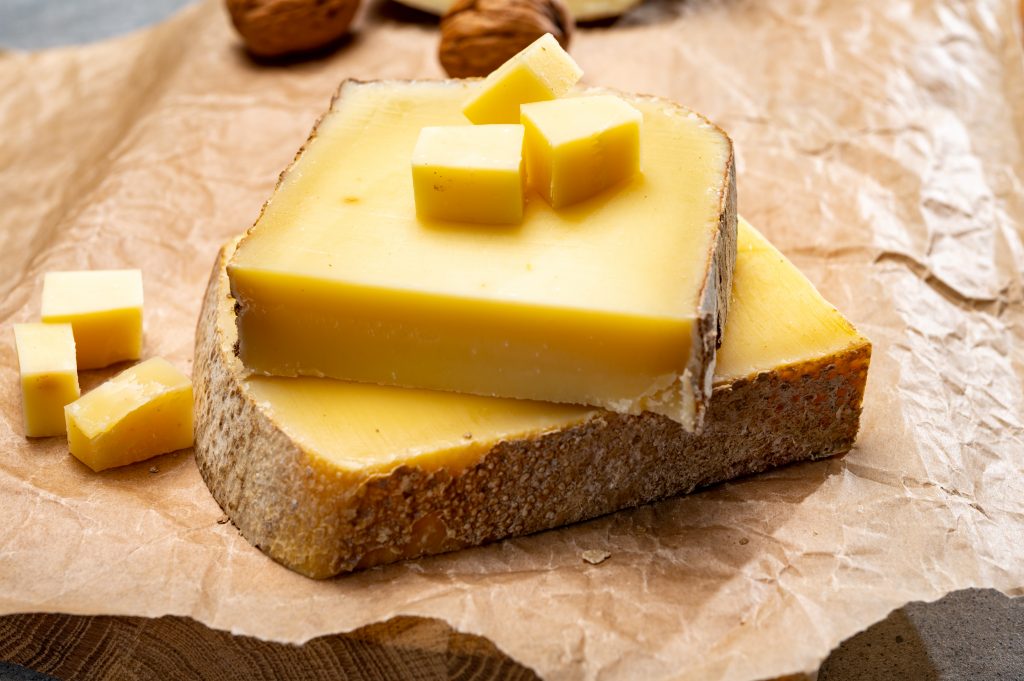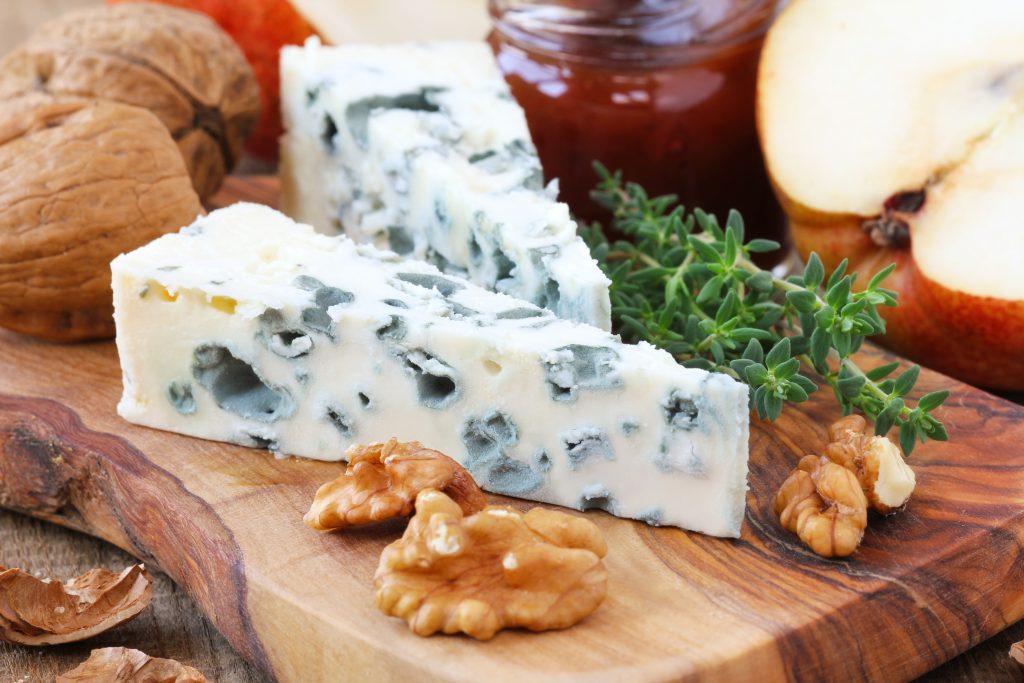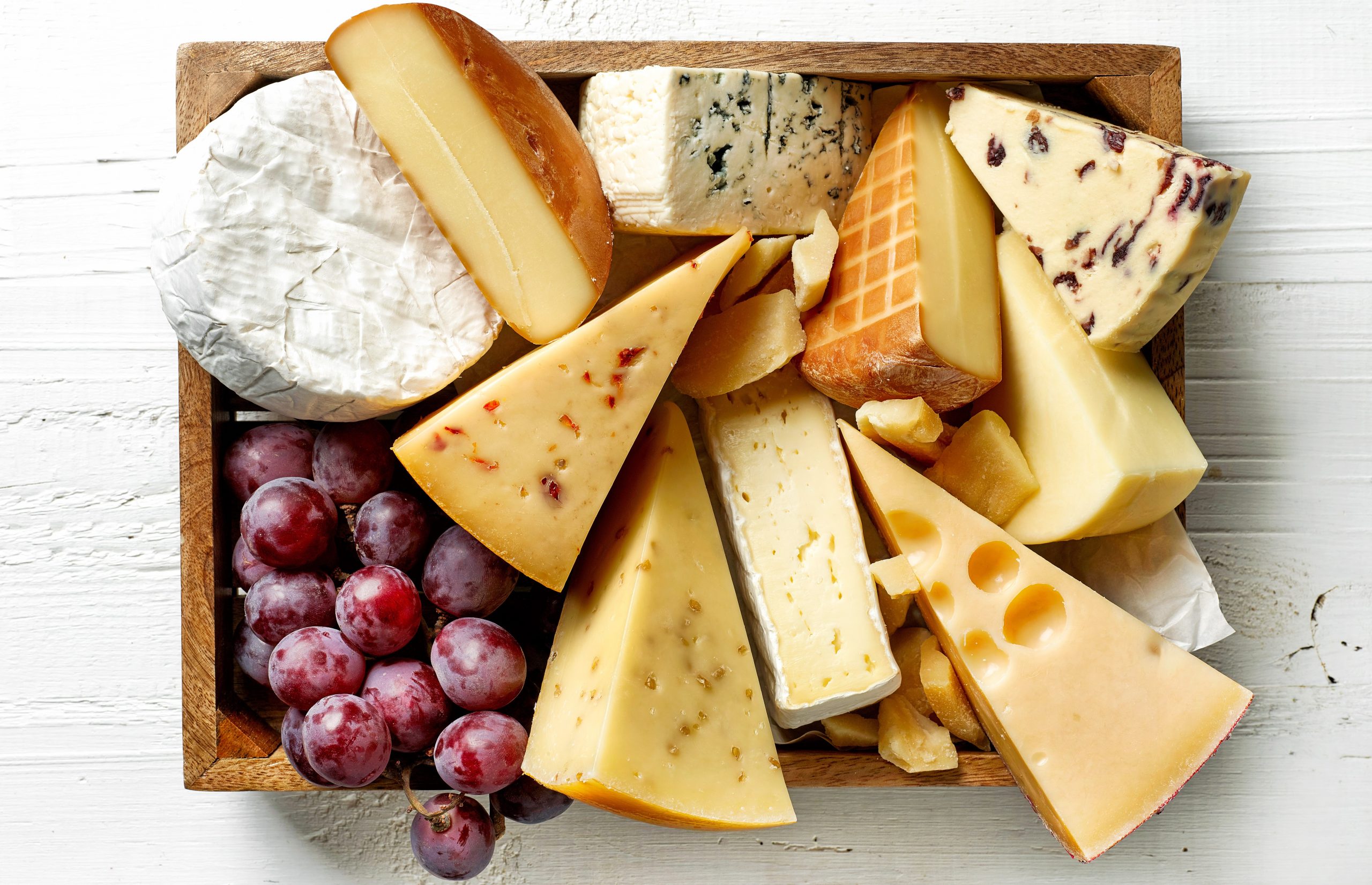France is renowned for its exquisite cheeses, each with a unique flavour, texture, and history. From creamy Brie to pungent Roquefort, French cheeses offer a diverse range of tastes that cater to every palate. In this comprehensive guide, we delve into the various types of French cheeses, providing examples and suggesting delightful food and drink pairings to enhance your culinary experience.
1. Soft Cheeses
Soft cheeses are known for their creamy texture and delicate flavours. One of the most iconic soft cheeses is Brie, with its velvety interior and edible bloomy rind, offering a mild and buttery taste. Camembert, another beloved soft cheese, boasts a slightly stronger flavour profile while maintaining a luscious creaminess. These cheeses are perfect for pairing with fresh baguette slices, sweet grapes, and a glass of crisp Chardonnay or sparkling cider, creating a harmonious blend of flavours that exemplify the elegance and sophistication of French culinary traditions.

Saint-Marcellin is a small, soft cheese from the Rhône-Alpes region of France with a velvety, creamy texture and a delicate nutty flavour. It can be eaten on its own or heated up for a gooey consistency like Camembert.
Similar to Camembert, Chaource is round with a soft texture that can be enjoyed both young and mature. Chaource has a rich and buttery flavour with hints of mushrooms and a slight tanginess. It is typically aged for around 2-4 weeks, allowing it to develop its distinctive taste and texture. Chaource cheese pairs well with Champagne or other sparkling wines, making it a popular choice for elegant cheese boards or as a luxurious addition to various dishes.
Originating from the Vallée de Munster in Alsace, Munster is a lesser-known soft cheese with a rich history dating back to the 7th century, and can be paired well with Gewurztraminer.
An ancient soft cheese from Normandy, Pont l’Evèque has a supple and creamy texture with a warm, yeasty aroma and a sweet flavour reminiscent of crushed walnuts. A full-bodied red wine such as Bouzy, Volnay, Bourgueil, or Pomerol complements the full flavour of Pont l’Évêque.
Cabécou is a soft French cheese made from goat’s milk, originating from the Midi-Pyrénées region. It pairs wonderfully with a variety of accompaniments, making it a versatile choice for cheese boards or culinary creations. It complements sweet flavours like honey or fig jam, balances well with salty cured meats such as prosciutto or salami, and pairs beautifully with crusty bread or crackers.
Often heart-shaped, Neufchâtel has a custard-coloured interior with a grainy texture and a salty, lactic flavour. It’s one of the oldest in France and is typically matured for eight to ten weeks, resulting in a dense but creamy centre and a soft, bloomy white rind. It offers yeasty aromas and flavours of butter, grass, hay, and mushrooms with a sharp, piquant finish. Traditionally made with raw, unpasteurized cow’s milk, the curds are drained off after coagulation, pressed, covered with penicillium candidum and shaped into its distinctive heart shapes. Neufchâtel pairs well with Blanc de Blancs Champagne or a Cabernet Franc from the Loire Valley.
Made from cow’s milk in the village of Epoisses in Burgundy, Epoisses has a washed rind that is washed in Marc de Bourgogne, a local pomace brandy, giving it its characteristic orange colour and strong flavour profile. Epoisses is aged for about six weeks during which it develops a soft, almost runny interior that oozes when ripe. Despite its intense smell, the taste is complex, with notes of earthiness, saltiness, and a hint of sweetness. This cheese is best enjoyed with crusty bread and a glass of wine to balance its bold flavours. Epoisses has gained a reputation as one of the most pungent cheeses in the world and is a favourite among cheese connoisseurs for its unique taste and texture.
Vacherin Mont d’Or, also known as Vacherin du Haut-Doubs, is considered a delicacy and is available mainly during the winter months. Vacherin Mont d’Or can be enjoyed in various ways, such as spooning it out of the container when perfectly ripe or baking it with garlic and white wine for an enhanced flavour experience.
2. Semi-Soft Cheeses
Semi-soft cheeses strike a harmonious balance between the creaminess of soft cheeses and the firmness of hard cheeses, offering a versatile eating experience.
Morbier is a semi-soft cheese with a distinctive line of ash running through the middle. Serve with charcuterie, cornichons, and a light Pinot Noir.
A semi-soft cheese from the Savoie region, known for its creamy texture and nutty flavour, you can enjoy Reblochon melted in dishes like tartiflette or paired with charcuterie, pickles, and a glass of dry white wine like Chardonnay.
Another cheese from the Savoie region, Tomme de Savoie has a semi-firm texture with a mild, earthy flavour. Serve with cured meats, olives, and fresh baguette slices. Pair with a light red wine such as Gamay, a glass of Beaujolais or a crisp white wine such as Sauvignon Blanc.
3. Hard Cheeses
Hard cheeses are aged for longer periods, resulting in a firm texture and complex flavours. They can be enjoyed in different ways, whether on their own, paired with complementary foods, or incorporated into various dishes for added depth and richness.

Comté is a nutty and slightly sweet cheese with caramel notes. Each wheel of Comté is carefully crafted by skilled artisans using traditional methods, resulting in a cheese that is highly prized for its exceptional quality and versatility in culinary applications Enjoy with crusty bread, honey, and a bold Cabernet Sauvignon.
Beaufort is a rich and savoury cheese ideal for grating over dishes or paired with dried fruits, walnuts, and a glass of Riesling.
Mimolette is a hard cow’s milk cheese from northern France. It has a bright orange colour and a nutty, slightly salty flavour. Mimolette pairs well with cured meats like prosciutto or salami, as well as with pickles or olives. Enjoy it on a cheese board or grated over pasta dishes.
Cantal is a firm cow’s milk cheese from the Auvergne region of France. It has a tangy, buttery flavour with earthy undertones and a crumbly texture. Cantal pairs well with fresh fruits like apples or pears, as well as with dark chocolate or honey. Use it in sandwiches or grated over soups and salads.
4. Blue Cheeses
Roquefort is a famous blue cheese made from sheep’s milk in the south of France. Pair with honey, walnuts, pears, or a sweet dessert wine like Sauternes and serve at room temperature to allow the flavours to fully develop.

A creamy blue cheese from the Auvergne region made from cow’s milk, Bleu d’Auvergne goes well with figs, apples, honey, or a robust red wine like Syrah. Allow the cheese to breathe by letting it sit out for about 30 minutes before serving.
One of the oldest French blue cheeses, Fourme d’Ambert is made from cow’s milk in the Auvergne region. Serve on a cheese board with crusty bread or crackers, and enjoy with grapes, pears, nuts, or a light red wine like Pinot Noir.
Bleu des Causses is a semi-hard blue cheese from the Causses region, which can be crumbled over salads or melted into sauces for a rich flavour.
Bleu de Gex is a semi-soft blue cheese hailing from the Jura region of France. This cheese boasts a creamy texture with a delicate blue veining that gives it a distinctive flavour profile. Its mild yet complex taste makes it a versatile addition to cheese boards or salads, offering a delightful experience for cheese enthusiasts seeking a unique French delicacy.
An iconic creamy and mild blue cheese, Saint Agur goes well with pears, honey, dark chocolate, or a sweet dessert wine like Port. Spread on crusty bread or use in creamy pasta dishes for a luxurious touch.
Conclusion
French cheeses offer a sensory journey through centuries of tradition and craftsmanship. By exploring the diverse types of French cheeses and experimenting with different pairings, you can elevate your culinary experiences to new heights. Whether you prefer soft, semi-soft, hard, or blue cheeses, there is a French cheese waiting to delight your taste buds and enrich your dining table. Bon appétit!
Subscribe to our free newsletter for the latest food and drink news plus guides, recipes and regional specialties. SUBSCRIBE HERE








i love st marcellin. it is not available in the United states.